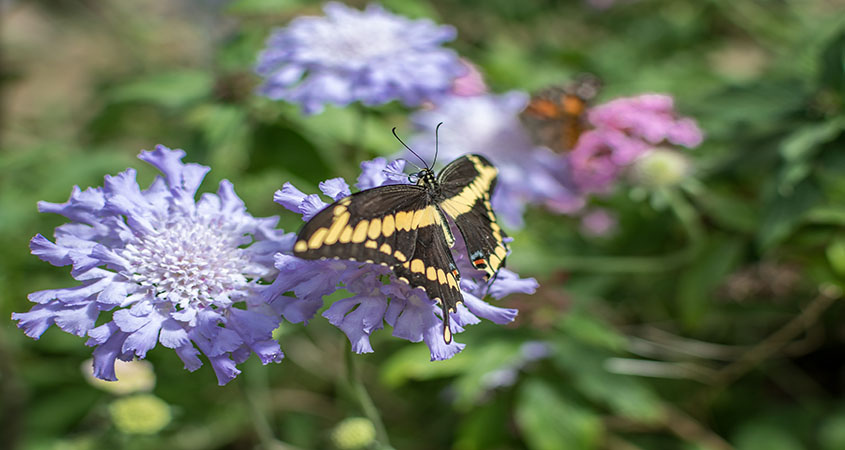Butterfly releases, thousands of landscape and garden plants for sale, and museum tours are among the activities at the Spring Garden & Butterfly Festival at Cuyamaca College on April 27.
Several thousand visitors from throughout the region and beyond are expected to visit the college, which houses The Water Conservation Garden and the Heritage of the Americas Museum. All three institutions have planned an array of family-friendly events. Admission is free.
The Cuyamaca College Ornamental Horticulture Department will hold its largest plant sale of the year. Old Town Trolley Tours of San Diego will provide free, narrated rides to and from the garden, the museum and the college.
Water Conservation Garden celebrates 20th anniversary

The Spring Garden and Butterfly Festival is one of the most popular events in East San Diego County. Photo: The Water Conservation Garden
This year’s festival is especially noteworthy because Cuyamaca College is celebrating its 40th anniversary and The Water Conservation Garden is celebrating its 20th. Both will be hosting displays celebrating their histories.
“The Spring Garden & Butterfly Festival is among the most popular events in San Diego’s East County region, and for good reason,” said Cuyamaca College President Julianna Barnes. “Not only is the plant sale a major fundraiser for our award-winning Ornamental Horticulture Department, this festival also allows our college, The Water Conservation Garden and the Heritage of the Americas Museum to showcase an impressive array of innovative programs we offer to the community.”
The annual event has its roots in the annual Spring Garden Festival plant sale benefiting the Ornamental Horticulture program. The event combined forces with the annual Butterfly Festival at The Water Conservation Garden in 2017.
For more details go to: https://thegarden.org/springfestival/




